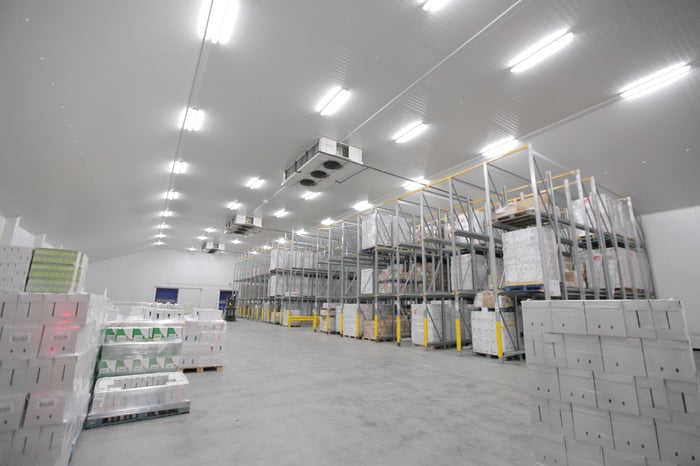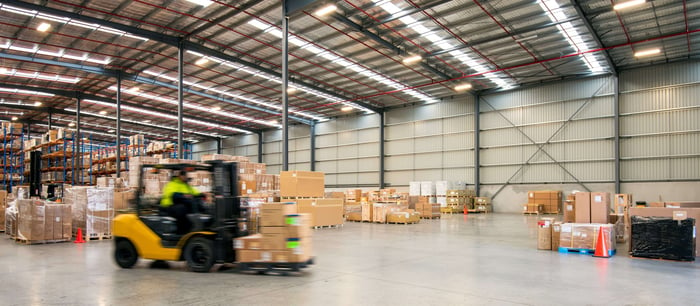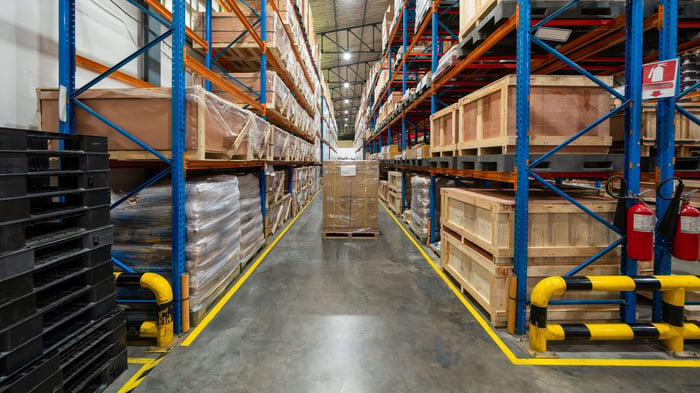Plywood or wire decking—that is the question for many warehouse operators across the US. Wire decking is becoming more popular as warehouses seek to improve long-term sustainability and efficiency in their operations.
So, what are the pros and cons of swapping your shelving for wire decking? In this guide, we’ll cover everything you need to know, including the benefits of making the switch and how to order it properly when you decide to move forward.
Keep reading for the ultimate guide to using this type of shelving for your warehouse.
What is Wire Decking?
First, let’s become more familiar with wire decking, or racking. It is a versatile storage solution commonly used in warehouses, distribution centers, and industrial facilities.
It consists of open-wire shelving units made from durable steel wire welded into a grid pattern. Wire racking is not only highly customizable, with adjustable shelf heights and various sizes to accommodate different product dimensions but also particularly useful for storing lightweight to medium-weight items.
Are you not sure if this type of storage is for you? We’ll cover all the pros and cons next.
The Pros and Cons of Wire Decking
One of the ways to decide whether this type of storage is right for your business is to review its pros and cons. Here are all of the unique advantages and disadvantages of wire decking to consider:
Pros:
Increased airflow and visibility or illumination from overhead lights
Improved fire safety (allows sprinkler penetration)
Prevents dust accumulation
Adaptable to various pallet rack systems
Supports even weight distribution and can support heavier items in comparison to plywood
Easy to clean and maintain
Durability and longevity
Cons:
May not be suitable for very small items as they can fall through racks
Can be more expensive than solid decking
Potential for items to catch or snag on wire
May require additional safety measures for certain types of goods
Wire Decking Ordering Best Practices
Of course, to order suitable wire decking for your facility or project, you need to understand the types, differences, and features of what’s available on the market today. To help you order or install the right type, here are the basics you need to know.
Sizes
Decking is available in a variety of sizes to accommodate different pallet rack configurations and storage needs in warehouses. The most common wire deck sizes typically range from 34 to 58 inches in depth and 36 to 96 inches in width.
Standard sizes include 42" x 46", 46" x 42", and 48" x 46", which are designed to fit popular pallet rack dimensions. The 42" x 46" size is particularly prevalent as it fits the common 42-inch-deep pallet rack while providing overhang for safe pallet placement.
Wire decks are also available in custom sizes to fit specialized racking systems or unique storage requirements. The thickness or gauge of the wire used in decking can vary, with heavier gauges providing greater load capacity. When selecting yours it's crucial to consider not only the dimensions of the pallet rack but also the weight and size of the items to be stored to ensure proper fit and support.
Types
The different types of wire decking are classified by their individual channel types, and the way in which they’re placed onto supports. The most common types include flared channel, inverted channel, step channel, and waterfall. Here’s more on each:
Flared Channels: Flared channel decking features U-shaped support channels with flared edges, providing a flush surface with the top of the rack beam for smooth pallet loading.
Inverted Channels: Inverted channel decking has U-shaped channels facing downward, offering a flat top surface and increased weight capacity.
Step Channels: Step channel decking incorporates a stepped design in the support channels, allowing for a lower profile while maintaining strength.
Waterfall: Waterfall types will have its front and back edges bent downward, offering additional safety by preventing items from sliding off. Some specialized types include flush grid decking for seamless surfaces and heavy-duty decking for exceptional load-bearing capacity.
Each type varies in its construction, weight capacity, and compatibility with different racking systems, allowing warehouse managers to choose the most suitable option for their specific storage and handling requirements. If you’re unsure, consult with an expert to avoid purchasing the wrong type and figuring it out too late.
Depending on your set-up type, you can choose varying ways to install or place the wire decking. For instance, a flat flush is where the decking sits directly onto the beams, while an up-turn waterfall will feature one edge turned downward and the other edge turned upward to provide additional support.
Again, the way in which your wire decking is installed will depend on your inventory and individual operations or inner workings.
The Final Word: Wire Decking for Your Warehouse
Whether you're looking for warehouse equipment or exploring ways to improve your warehouse, BMH is your all-in-one source for all things inventory. Our expert team supports new builds, re-designs, or renovations from start to finish with the designs and supplies you need.
BMH is one of the fastest-growing companies in the material handling space, having grown 732% year-over-year in 2022, thanks to its exemplary warehouse solutions and service. Even better? We have locations in the Midwest, Northeastern, and Mid-Atlantic regions to serve warehouses in person or with expedited delivery and shipping.
Get started revolutionizing and innovating your warehouse space to empower operations. Contact BMH to begin planning your project now!




